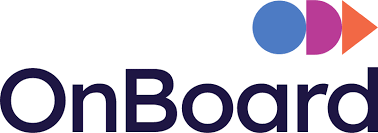Has your board digitalised? What benefits can it gain? Find out how digital transformation is the foundation of a more effective board
This blog is written by OnBoard, board management software.
In the 12 months to March 2021, boards became more effective and collaborative, spend more time on strategic issues than before, according to OnBoard’s 2021 Board Effectiveness survey. Survey respondents said the shift to more digital ways of working were the primary cause for these improvements. About 40% of survey respondents cited using board portal technology to support these new methods of work.
Of course, before the onset of the pandemic and the associated lockdowns, many boards were already using some form of technology to support their work — distributing board papers and other content by email, for example; or enabling access to content in a file-sharing environment.
Now, however, boards are much further along their digital transformation journey, those using board management platform for example had their progress accelerated by the pandemic. Obliged to work from home, they had to find a way to virtualise the communications that had traditionally occurred in person. Videoconferencing was the go-to option, giving board members the comfort of face-to-face meetings despite their distributed locations.
Digitally-driven improvements
Like any other team of people suddenly forced to work from home, boards had to adapt while remaining accountable to their organisations. Our survey results indicate that many boards reported impressive improvements, including a staggering 79% of respondents saying their board had become more effective.
Boards that were already using — or quickly adopted — board portals or board intelligence solutions were able to take advantage of fully integrated content and communications. OnBoard’s survey showed that these boards were more likely to:
- Achieve positive governance outcomes
- Distribute meeting materials to board members earlier
- Have board members who were well prepared for meetings
Other benefits of board-specific solution include increased security for confidential information, improved sustainability through a reduction in print, and creation of a more productive meeting environment. And with everyone working virtually, individuals who used to dial in to meetings when everyone else was physically at the table report feeling more involved in the proceedings than before.
What’s next for the board?
Boards that have successfully steered their organisations through the pandemic so far will now be assessing the next phase of the organisation’s strategy and development. What are the organisation’s priorities and objectives? Has its direction changed during the pandemic? Is it ready to expand into new regions, or keen to address new customer groups?
If the strategy is indeed evolving, then it will be vital to look at the composition of the board to work out whether it’s still the right team, with the right mix of skills and experience, to take the organisation forward. Even if the organisation’s direction remains fundamentally unchanged, it’s still worth evaluating the make-up of your board. The social, political and economic upheaval that’s gone hand in hand with the pandemic may mean some adjustments must be made to the board to future-proof it.
Technology-supported diversity
So when it comes to assessing and adjusting the composition of your board, how can technology help? With a board portal or board intelligence solution you’ll find you can:
Efficiently evaluate the board. Board-specific solutions incorporate tools that enable boards to evaluate themselves on environmental, social, and governance issues in the context of organisational purpose. This helps them to go beyond a ‘box-ticking’ exercise and really start to enact their environmental and social governance (ESG) policy.
Bring a more diverse range of people onto the board. One of the benefits of technology-enabled remote and digital working is that you can be more ambitious about who you bring onto the board. In particular, you can more easily involve individuals who can’t attend in person — perhaps because they’re based too far away, or they’re unable to travel because of a disability or a caring responsibility.
Make new members feel at home. Once you’ve recruited new board members, you need to create an inclusive environment where people with different backgrounds, experiences and perspectives can feel at home and start contributing confidently to your organisation’s success. When it’s easy for new members to access past board papers, current policy documents and other materials, they can quickly get themselves up to speed with the board’s practices and processes. Of course, you’ll want to be sure that all members — both new and existing — are confident using your chosen technology, wherever you are on your transformation journey. That’s an issue that can be addressed with training and support, and by ensuring everyone has (and knows how to use) appropriate devices.
Conclusion
As organisations switch their mindset from surviving the pandemic to taking their business forward, boards must be in a position to effectively guide them. It is incumbent for today’s modern Boards to embrace digital transformation to help them work more effectively and ensure they comprise the people and skills that make them fit for the future.
New to the non-executive director role? We invite you to watch our acclaimed webinar How to secure your first NED role. Registration link here.
Experienced NEDs looking for positions and professional development opportunities, book a consultation at this link and subscribe to the newsletter We look forward to connecting with you.



